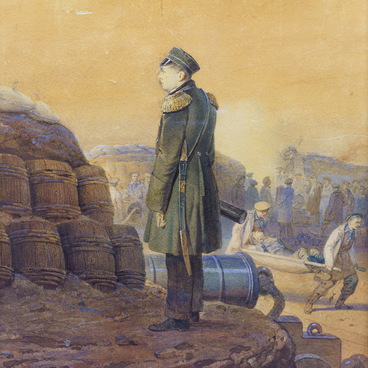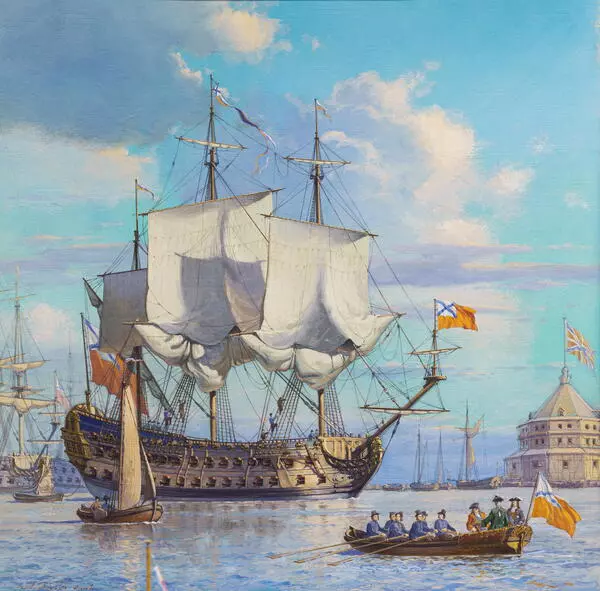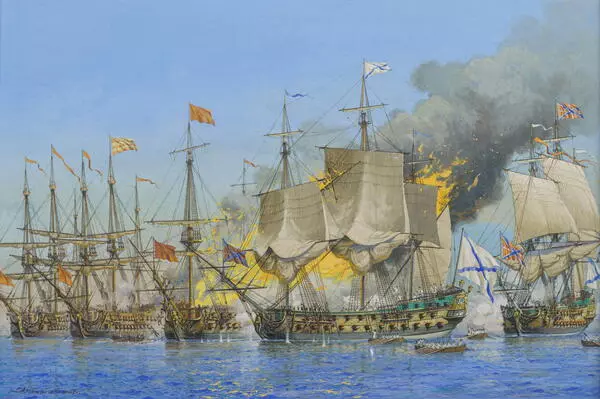During the Crimean (Eastern) War of 1853–1856, by the end of the summer of 1855, the situation in Sevastopol became critical, and the Russian command started getting ready to abandon the city. The Black Sea Fleet virtually ceased to exist, and active operations of the Baltic, Northern, and Pacific Fleet had stopped by that time. Enhancing the defensive strength of naval fortresses, including Kronstadt, became a burning issue. Underwater mines, successfully tested as early as 1852, were considered one of the methods of strengthening the defense. The naval command ordered to place 1,865 mines designed by the physicist Boris Semyonovich Jacobi and the chemist Immanuel Nobel between the forts. Although the British and French squadron came close to Kronstadt in July 1854, it did not dare to attack the fortress. Justifying his hesitance, the squadron commander Admiral Charles Napier reported to the British Admiralty about the strong defense of the sea gates to Kronstadt with “infernal machines” which was what underwater mines were called at the time.
After checking the mines at the end of the navigation season of 1854, Russian sailors discovered that many of them had become faulty. Then the engineer Jacobi made significant modifications to their design: the wooden housing was replaced with a metal one, and the powder chamber was also protected with metal. New mines were laid around Kronstadt in the early spring of 1855. The British and French squadrons cast anchor in the Gulf of Finland. The allies found out that the fortress’ defense had been strengthened compared to the previous year. On June 9, 1855, a squad of British and French steamers was carrying out reconnaissance of approaches to Kronstadt and stumbled across the Russian mine field. The armed steamers “Merlin” and “Firefly” struck mines almost at the same time, and on June 20, “Vulture” was damaged by a mine too.
The first Russian anchor mines with a powder charge of 10 to 15 pounds were not very powerful. All the British ships that struck mines managed to stay afloat, return to their base on their own, and step back into the ranks after dock repairs. However, the psychological effect was so strong that not a single enemy ship approached Kronstadt until the end of the war. After studying the new information about the defense of Kronstadt, the command of the British and French squadron held several military councils and concluded that “attacking Kronstadt would be tantamount to suicide.”
After checking the mines at the end of the navigation season of 1854, Russian sailors discovered that many of them had become faulty. Then the engineer Jacobi made significant modifications to their design: the wooden housing was replaced with a metal one, and the powder chamber was also protected with metal. New mines were laid around Kronstadt in the early spring of 1855. The British and French squadrons cast anchor in the Gulf of Finland. The allies found out that the fortress’ defense had been strengthened compared to the previous year. On June 9, 1855, a squad of British and French steamers was carrying out reconnaissance of approaches to Kronstadt and stumbled across the Russian mine field. The armed steamers “Merlin” and “Firefly” struck mines almost at the same time, and on June 20, “Vulture” was damaged by a mine too.
The first Russian anchor mines with a powder charge of 10 to 15 pounds were not very powerful. All the British ships that struck mines managed to stay afloat, return to their base on their own, and step back into the ranks after dock repairs. However, the psychological effect was so strong that not a single enemy ship approached Kronstadt until the end of the war. After studying the new information about the defense of Kronstadt, the command of the British and French squadron held several military councils and concluded that “attacking Kronstadt would be tantamount to suicide.”








